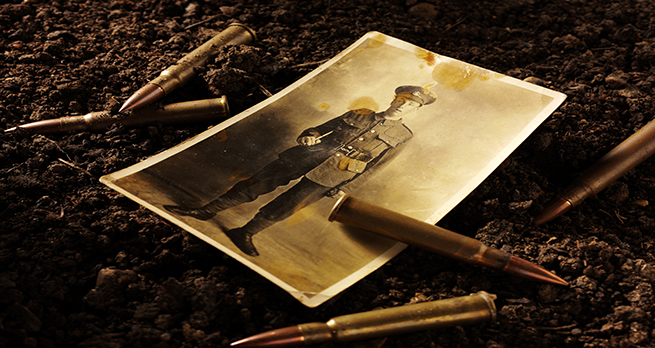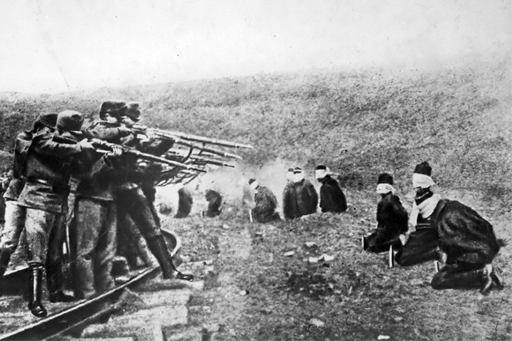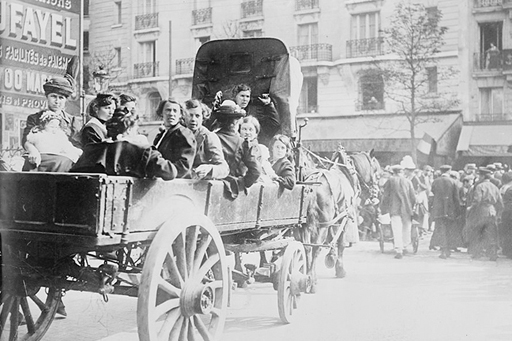2.1.4 Atrocities committed by other armies
Of course, Germany did not have a monopoly on violence against civilians. In June 1915, for example, French planes killed 30 civilians and wounded 68 more in just one attack in the southern German town of Karlsruhe. In total, 740 civilians died in Germany from allied bomb attacks during the war, while 1900 were injured.
Both sides wished to undermine their enemy’s morale by targeting civilians who had to get used to living with air raid sirens, blackouts and air raid shelters as the distinctions between combatants and non-combatants were removed. It is important to note that French and British armies never faced enemy civilians on enemy territory and thus we cannot compare their behaviour with that of Germany.
Where armies met civilians, acts of violence against them were commonplace. For example, atrocities were committed by the Austro-Hungarian army during its occupation of Serbian territory. In order to seek revenge for the murder of Archduke Franz Ferdinand, whose assassination at the hands of a Bosnian Serb had been the trigger for the events that led to war, reprisals against Serbs were widespread. It is estimated that as many as 650,000 Serbian civilians died in the war (though this figure also includes those who perished from diseases and malnutrition).
All occupied territories saw greater or lesser degrees of forced labour, deportation and internment of civilians, including some 70,000 Serbs by 1916, and some 100,000 French and Belgians between 1914 and 1918. Russia, one of the Allied Powers, did occupy enemy territory, and Russian troops also committed atrocities against civilians there. About 100,000 Germans were interned by Russia. Both sides used techniques of modern warfare against civilians, including aerial bombardments and naval warfare (which led to the sinking of passenger ships), thus transforming the civilian experience of war once and for all.
The war also allowed states to commit atrocities against minorities within their own borders. A tragic example of this is the fate of the Armenians in the Ottoman Empire, up to one million of whom are believed to have perished due to mistreatment and murder. You will find these figures reflected in the casualty statistics that you consulted last week. Russian troops mistreated civilians during their retreats from Galicia and Bukovina in 1915 and deported some three million inhabitants, while the German retreat of four armies in France in 1917 led to the evacuation of 160,000 civilians and the complete destruction of the territory they left behind.


